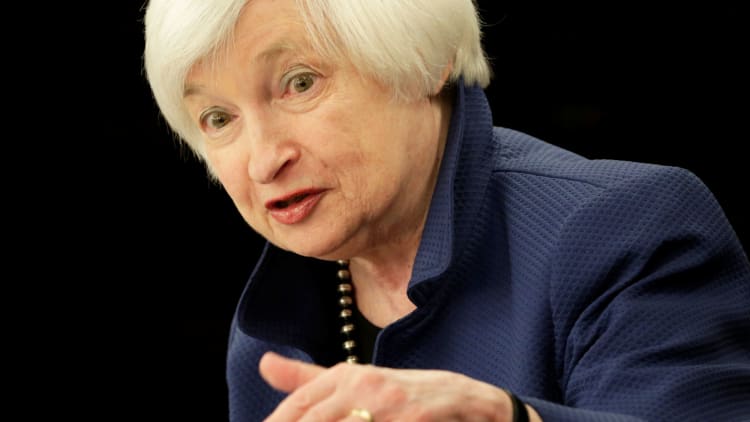
What hopefully will be a peaceful transition of economic power from the Federal Reserve to the halls of Congress appears to have accelerated this week.
Several critical steps in the process have happened recently.
First, Fed officials a couple weeks ago began an aggressive pivot toward raising interest rates despite market expectations that the first hike of 2017 likely wouldn't happen until June. But speeches from multiple policymakers pointing toward a March hike failed to rattle the markets, which avoided the tantrums that had characterized previous hints of hawkishness.
Then, the Fed went ahead with the increase Wednesday without causing any major disruptions — in fact, stocks rallied and government bond yields fell.
Next up: Getting action out of Congress in terms of fiscal stimulus that takes the burden off the Fed and all the monetary alchemy it has used to prop up the economy for the past 8½ years.
Wall Street will be watching closely for a successful handoff.
The Fed "has been story No. 1 going back to 2009," said JJ Kinahan, chief market strategist at TD Ameritrade. "They are now story 1A, and (fiscal) policy will take the day because policy is so much more unpredictable now than the Fed."
Ask and you shall receive — finally
For much of the time since the Fed took its overnight funds rate down to near zero in late-2008, and launched three rounds of bond buying that took its balance sheet to $4.5 trillion, officials have been imploring Congress and the White House for more help on the fiscal side.
That's because growth has been halting and uneven under the aggressive monetary regime.
The economy has averaged less than 2 percent growth during the recovery. While unemployment has plunged — Fed Chair Janet Yellen on Wednesday estimated 16 million new jobs since the end of the financial crisis — real income has been just above flat. And while stocks and other asset prices have surged, the distribution of that wealth has been skewed to the top.
At last, Fed officials might get their wish.
President Donald Trump has spurred hopes for growth — which may well have pushed the rate hike calendar further along — through pledges of tax cuts, regulatory rollback and infrastructure spending.
Though the stimulus is just talk at this point, Trump's agenda seems to have replaced the Fed's machinations as the center of the market's universe.
"The Fed as a trigger of repricing the fixed income market has largely run its course," David Woo, head of global rates and currencies research at Bank of America Merrill Lynch, told CNBC. "I think the only thing that matters right now is tax reform."
No more 2:30 Fed day freakout
For many on Wall Street, a shift away from every utterance of Fed speak and every tweak of verbiage in the Federal Open Market Committee post-meeting statements would be a welcome development.
"As soon as there is some progress on fiscal policy, then there won't be so many people locked in at 2:30 on Fed day to watch a press conference," said Scott Clemons, chief investment strategist at Brown Brothers Harriman. Each quarter, Yellen gives a post-meeting Q&A with the press that is carefully watched on Wall Street.
"The White House and the Hill have far more power through legislation to influence corporate earnings than the Fed does through interest rates," Clemons added. "So, yes, I would welcome that as a more durable driver of equity prices."
The stock market certainly has had a friend in the Fed. The has surged more than 250 percent since the bull market began just more than eight years ago.
However, the rally has gotten new life since Trump was elected in November, with the index up about 11.6 percent since.
If Trump can work with Congress to deliver on his agenda, the handoff from the Fed could become complete.
"It's unclear as to what we'll get, when we'll get it and how much they'll boost growth from a fiscal policy perspective," said Michael Arone, chief investment strategist at State Street Global Advisors. "This dynamic is going to be interesting as it plays out through the balance of the year."
WATCH: One analyst believes the market is getting ready to cool off.



